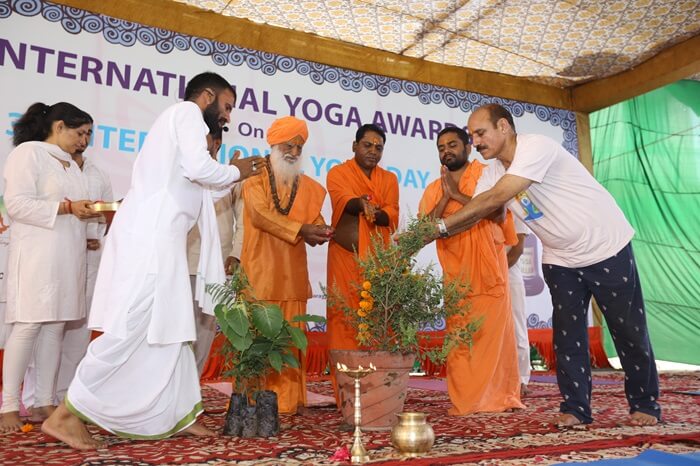Ashtanga Namaskara: A Path to Inner Freedom
Ashtanga Namaskara is a traditional yoga pose that combines specific breathing patterns, postures, and gaze points. This foundational yoga practice warms up the body, preparing it for further activities. To explore its benefits and learn the correct technique, continue reading below.
Practicing the full Ashtanga system with devotion can lead to profound inner freedom and peace.
Understanding Ashtanga Namaskara
Yoga, which originated in ancient India, is a spiritual, physical, and mental practice aimed at uniting the body, mind, and spirit. Among its various styles, Ashtanga Namaskara, also known as the “Eight-Limbed Pose,” is a significant element of the Surya Namaskara sequence. This posture is a gesture of respect towards elders or deities and involves placing eight points of the body on the floor: chin, chest, two hands, two knees, and two feet.
Benefits of Ashtanga Namaskara
Improves Flexibility and Posture
- Ashtanga Namaskara challenges the muscles around the spine, increasing flexibility and strength. This posture enhances the natural alignment of the spine and can alleviate back pain.
Purifies the Body and Mind
- This pose aims to cleanse and purify from the inside out. By focusing on mindfulness and removing internal clutter, you achieve a healthier body, a peaceful mind, and increased energy.
Enhances Self-Awareness
- The practice of Ashtanga Namaskara heightens self-awareness and stimulates the Manipura Chakra, which influences digestion and inner strength. This awareness promotes a balanced and fulfilling life.
Promotes a Healthier Lifestyle
- As a preparatory pose for more advanced practices, Ashtanga Namaskara increases blood flow, tones muscles, and builds confidence. It supports a holistic approach to wellness.
Strengthens and Stretches Muscles
- This pose stretches the soles, toes, lower back, hips, and neck while strengthening the abdomen, core, knees, and chest. Proper breathing (pranayama) during the pose also helps in stress reduction.
How to Practice Ashtanga Namaskara
Begin in Plank Pose
- Ensure your shoulders are directly above your wrists.
Lower the Knees
- On an exhalation, bring your knees to the floor with your toes tucked under.
Lower the Chest and Forehead
- Exhale again and bring your chest and forehead to the floor, keeping your abdomen and hips elevated.
Touch the Chin
- If possible, touch your chin to the ground for enhanced benefits. Breathe deeply while balancing on your arms, chest, and knees.
Chant a Mantra (Optional)
- You may chant “Om Pushne Namaha,” which is a greeting to the body.
Release the Pose
- Hold the position for a few breaths, then gently lower yourself to the mat.
Contraindications
Avoid Ashtanga Namaskara if you are recovering from injury or surgery, are pregnant, or suffer from high blood pressure or migraines, as it may increase discomfort or risk.
Conclusion
Incorporating Ashtanga Namaskara into your yoga practice offers a range of physical and mental benefits, from improved flexibility and posture to enhanced self-awareness and overall wellness. By embracing this pose, you pave the way for a more balanced and positive life. To further your journey in yoga, consider joining our 200-hour Yoga Teacher Training in India, 300-hour Yoga Teacher Training in India, or 500-hour Yoga Teacher Training in India. For additional rejuvenation, explore our Ayurveda Retreat in India or a Yoga Retreat in India. Embrace these practices to unlock your full potential and lead a harmonious life.















